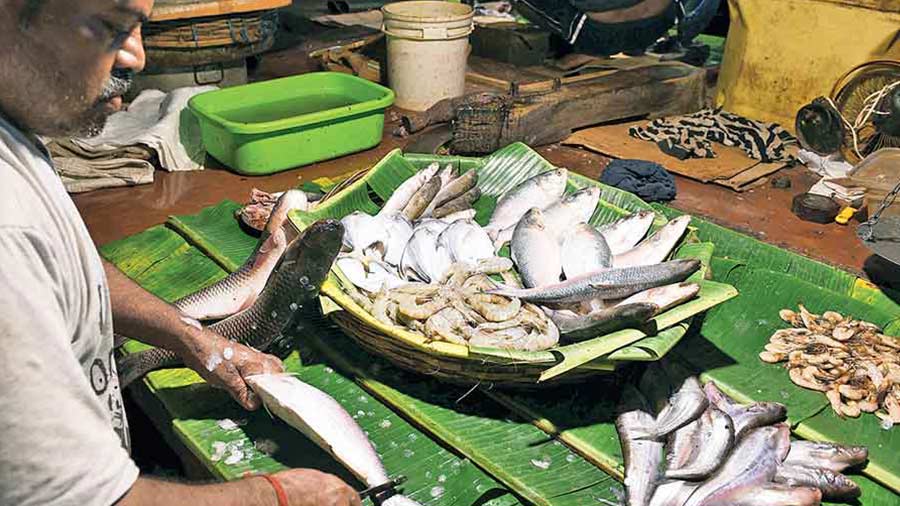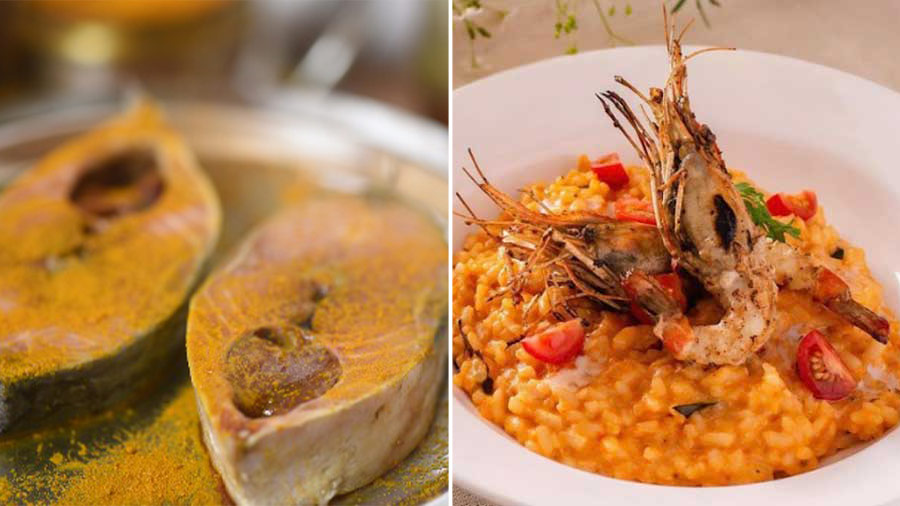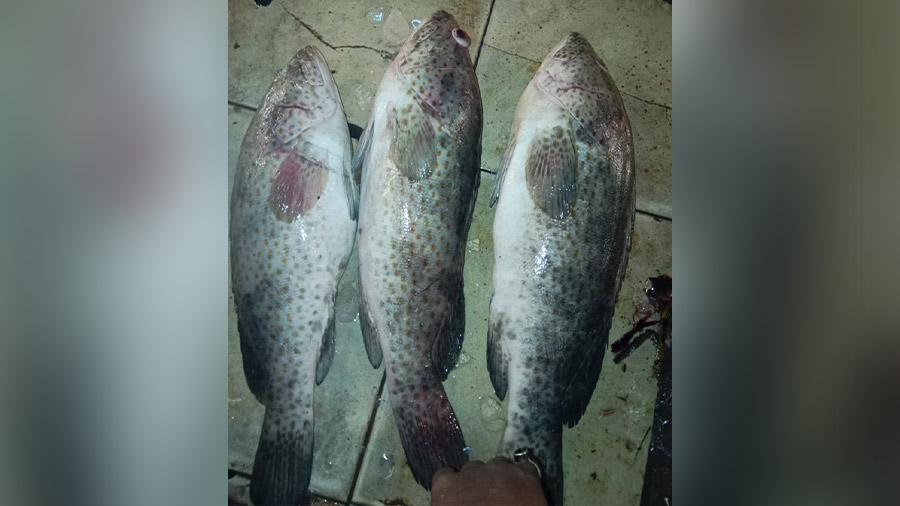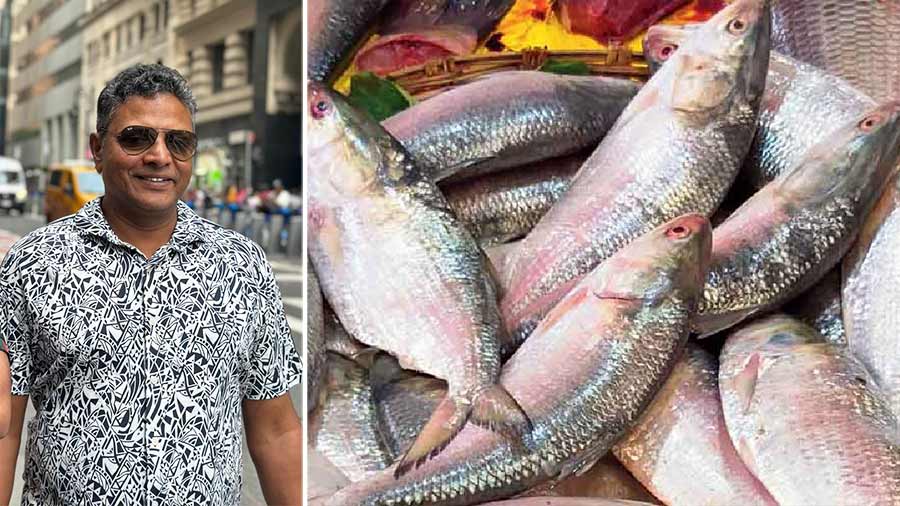Last year, Chandan Pandit, a Gariahat-based stock analyst, told us why he is the greatest fish lover in Kolkata. Among other things, he eats 2kg of fish every day and has a refrigerator reserved for him inside the Gariahat fish market! This year, with Durga Puja and the obsession with fish around Bengal’s greatest festival almost here, Chandan tells My Kolkata the secrets of securing the best catch — what, when and how to buy fish.
Sitting in his office in Kalighat, Chandan is all smiles before unleashing a bevy of tips. He admits to having done most of his Puja shopping already (for clothes, not fish!), and is excited to cook even more than usual with the Puja break giving him more time to focus on gastronomic pleasures. So, what are the basics when it comes to buying fish?
Why you should go fish shopping after 10am and never on Sundays
“Never shop for fish on Sundays. That’s when prices are the highest, because most babus tend to visit the fish market on Sundays. Also, when you’re going to buy fish, go around 10-11am. Fishmongers tend to take you for a ride early in the morning, when most of the stock has just arrived. Sometimes the best fish does get sold early in the day, but if you want to save money, going after the initial rush has settled is always better. Even if you’re buying fish that’s been covered with ice, it’s not a problem. The colour and the fat might deteriorate, but the taste won’t,” explains Chandan, who generally does his fish buying on Saturdays, between late morning and early afternoon.
The next step towards spotting fish and bargaining for them is to know which fish are in season and which are off season: “For example, right now, chingri (prawns) and topshe (mango fish) will be expensive. Their prices will come down significantly in November, when the supply is much more. Either way, always start bargaining by quoting 20 per cent less than what you know to be the standard rate. You can even try querying about fish you won’t buy before suddenly asking the price of what you want to take home. That can catch some fishmongers off guard.” Chandan believes that fish prices are also affected by the exact time of the month. Since most people who buy fish in bulk tend to do so in the first 10 days of the month — more so salaried professionals who get paid during that time — it is generally cheaper to buy fish when demand is less towards the end of a month.
The end of October, though, is Durga Puja, which means that while some fish like rui (rohita) plummet in price, others that are eaten more during the festival, particularly at restaurants, such as bhetki (barramundi) can be taxing on the wallet. “Whatever you do, don’t buy bhetki and chingri during the Puja days. You’ll be paying through your nose. Buy it in advance and store it. There’s no merit to the argument that stored fish is unhealthy. Just that you must eat it whole once you cut it. Never cut the fish and put it back in the fridge,” warns Chandan.
‘Always buy fish two days after Amavasya and/or Purnima’

In case you do not want to touch the fish, you should not go to the fish market, believes Chandan TT Archives
“For other months of the year, here’s another hack. Always buy fish two days after Amavasya and/or Purnima. That’s when a lot of fine fish come in and you can get a good deal,” smiles Chandan, knowing fully well that a lot of so-called fish experts tend to do the opposite. As for how to tell a good fish from a bad one purely through touch, Chandan has the answer for that, too: “It’s simple. All good fish should be hard when you press them, with the possible exception of topshe. Also, when you squeeze the gills of the fish, most of them should have a bright red liquid running out. In the case of pomfret, it’s likely to be more reddish white.” But what about those who do not want to touch the fish? Chandan’s advice for them is even simpler: “Don’t go to the fish market, just go to a nice restaurant!”
Once he starts talking about fish, Chandan can be harder to stop than his favourite batter, Virender Sehwag, in full flow. Before we know it, he tells us why “most bad fish are kept at the bottom of the pile”, why a “yellowish tinge on topshe, a greyish blemish on tengra (a type of catfish) and a reddish look on pabda (butterfish) are bad signs”, how “fish is most expensive in summer” and why one should “never get their fish cut from the same guy who sells it to you”. Why not? Chandan gives another characteristic smile, before unravelling the reason like a classified document: “A lot of people try to save money for the cutting of fish, which isn’t a lot to begin with. They simply ask the guy they’re buying it from to cut it. The moment the customer looks away, most of these fishmongers switch the fish and give them an inferior version of the product. That’s why you must always go to someone else to cut the fish and keep a good track of where their hands are going. These are professionals after all!”
How to get the best ilish and chingri during Puja season

Like most of us, ilish and chingri are Puja favourites for Chandan, who will be cooking them at home TT Archives
When it comes to Puja, Chandan is well aware of the protagonism of ilish (hilsa) and chingri. Not least because he plans to gorge on Bengal’s favourite fish during the Puja days, cooking most of it himself. “Between Viswakarma Puja and the first week of November, you’ll see a lot of ilish coming into Kolkata from Bangladesh. The best quality is the stock that arrives from Chandpur. The fish is lighter and smaller than that which comes from Khulna, but the Chandpur variety has the best taste. One way to tell Bangladeshi ilish from Indian ilish or Burmese ilish is the colour on the body of the fish. There’s a clear reddishness to the Bangladeshi catch, while that from Myanmar is more whitish. If you hold the ilish by its head and the rest of the body starts bobbing or swaying, then that’s the one from Mumbai,” says Chandan.
For chingri, Chandan is adamant that you do not need to buy chingri that is alive. “Everyone wants chingri that’s still moving, which can be hard to get with Puja closing in. Just remember that whatever chingri you buy, be it bagda or galda, you must check the head. If the head has turned red or it has broken, mention that to the seller. You shouldn’t be paying for the head when you’ll be throwing it away in any case,” details Chandan, who also expresses a grievance: “If you look at the market right now, people aren't able to afford ilish or chingri for the most part. That’s because, during the monsoon, most of the small fish were caught and sold. There are laws saying you can’t catch fish below a certain weight (depending on the exact region and fish), but these laws are routinely flouted. With complicity from the administrators, too. If only they had let the small fish grow a few months without catching them, there’d be far less scarcity in the market right now, when more and more people want to prepare and eat fish.”

The badejo from Brazil, sold to Chandan recently at Gariahat market Chandan Pandit
Before Chandan can leave us and go back to analysing stocks instead of fish, we ask him what his favourite Puja fish dishes are. “There’s the chingrir malai curry, shorshe ilish and fish fry. These are the classic choices and all of them are made at home. I don’t like to eat fish at restaurants. What they serve you, especially during Puja, isn’t up to the mark. Just consider how one piece of fish fry is sold at Rs 100 or 200. That’s not bhetki, it’s basa. And if you want to eat basa anyway, just make it at home. It’s super easy,” says Chandan.
But there is more to Chandan’s Puja menu, something he has added recently: “I was shopping the other day in Gariahat when one of the sellers gave me a fish I couldn’t recognise initially. He called it ‘koi bhola’. But, after a good look, I knew it was badejo (from the small spots on the flesh), the costliest fish one can buy in South America. Back in 2007, I bought it for around $20 in Brazil. That day, I got it for Rs 180!”
And how is badejo best consumed? “In the form of a fish stew called Moqueca. It’s a delicacy in Brazil,” responds Chandan, wrapping up his masterclass.

